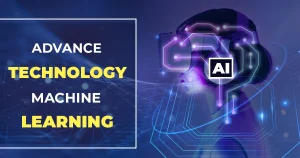In the fast-evolving world of cryptocurrency, mining Bitcoin has long been associated with powerful computers and specialized hardware setups. However, a new frontier has emerged, allowing individuals to participate in Bitcoin mining directly from their smartphones. This groundbreaking approach brings accessibility and convenience to the forefront, enabling both novice and experienced users to engage in the process of cryptocurrency creation.
Gone are the days when mining Bitcoin required extensive technical knowledge and significant investments in hardware. With the advent of innovative mobile mining applications, users can harness their smartphones’ processing power to contribute to the global Bitcoin network. This shift democratizes the mining landscape, as it opens doors for a more inclusive and decentralized network of miners.
But how does mobile Bitcoin mining work? This description will delve into the technological marvel that allows smartphones to mine cryptocurrency. It will explore the intricacies of proof-of-work algorithms, which are the backbone of Bitcoin’s security, and how smartphones have become surprisingly adept at solving these complex mathematical puzzles. Additionally, the description will touch on the energy efficiency of mobile mining, highlighting its potential contributions to sustainability within the crypto industry.
As we journey through the possibilities of mining Bitcoin from smartphones, we’ll also discuss the challenges and limitations. Smartphone mining operates on a smaller scale compared to traditional mining farms, which means that individual gains might be relatively modest. However, the cumulative effect of widespread smartphone mining could potentially have a notable impact on the network as a whole.
Join us as we delve into the world of mobile Bitcoin mining, exploring the user-friendly apps, the technological marvels that make it possible, and the exciting potential it holds for the future of cryptocurrency. Discover how anyone with a smartphone can now become a part of the global Bitcoin ecosystem and contribute to the decentralized revolution from the palm of their hand.
Understanding Bitcoin

Bitcoin is a revolutionary digital currency that operates on a decentralized and secure network called the blockchain. Created in 2009 by an anonymous person or group using the pseudonym Satoshi Nakamoto, Bitcoin enables peer-to-peer transactions without the need for intermediaries like banks. It functions as a store of value and a medium of exchange, allowing users to send and receive payments globally with relative speed and low fees. What sets Bitcoin apart is its limited supply—only 21 million coins will ever exist, making it a deflationary asset. Transactions are verified by miners through complex mathematical puzzles, ensuring security and immutability. Its value is influenced by factors like demand, adoption, and market sentiment. Bitcoin has sparked a wave of innovation, inspiring the development of thousands of other cryptocurrencies and paving the way for the broader acceptance of blockchain technology.
What is Bitcoin Mining?
Bitcoin mining is the process by which new bitcoins are created and added to the circulating supply. It also plays a crucial role in securing the Bitcoin network. Miners use powerful computers to solve complex mathematical puzzles, known as proof-of-work, which validate and confirm transactions on the blockchain. These puzzles require significant computational effort, and the first miner to solve the puzzle gets the privilege of adding a new block of transactions to the blockchain. In return for their efforts and resources, miners are rewarded with newly minted bitcoins and transaction fees. This competitive process ensures the integrity of the network, prevents double-spending, and maintains a decentralized ledger of all Bitcoin transactions. Over time, mining becomes progressively harder as the network adjusts the difficulty level to maintain a consistent rate of new block additions, typically around one every 10 minutes.
Is Bitcoin Mining Profitable?
Bitcoin mining’s profitability can vary significantly based on factors such as the cost of electricity. The efficiency of mining hardware, the current Bitcoin price, and the level of competition In the early days, when the network was less saturated, individuals could mine Bitcoin profitably using basic computer setups. However, as the network grew and mining became more competitive, specialized hardware known as ASICs (application-specific integrated circuits) became necessary for efficient mining. While mining can still be profitable for those with access to cheap electricity and up-to-date hardware, As the Bitcoin network adjusts its difficulty level, along with potential price fluctuations, mining’s profitability remains subject to change.
How Do You Start Bitcoin Mining?
1. Hardware Selection and Setup
Choose the right mining hardware, which nowadays typically involves ASICs due to their high efficiency. Research and compare various models to find the one that suits your budget and energy efficiency requirements. Once you have the hardware, set it up properly, connecting it to a power source and a reliable internet connection.
2. Select a Mining Pool
Mining alone can be challenging due to the increasing difficulty of solving proof-of-work puzzles. Joining a mining pool allows you to combine your hash power with other miners, increasing your chances of earning rewards more regularly. Research different mining pools, considering factors like pool fees, payout methods, and reputation.
3. Software and Configuration
Install mining software compatible with your hardware and the chosen mining pool. Configure the software with the required pool information and your wallet address to receive rewards. Some well-known mining programming choices incorporate CGMiner, BFGMiner, and EasyMiner. Regularly monitor and optimize your setup to ensure it’s operating efficiently.
Keep in mind that Bitcoin mining involves initial investments in hardware and ongoing costs such as electricity. Additionally, the mining landscape is highly competitive, so it’s important to research and stay updated on industry trends to make informed decisions about your mining operation’s profitability.
Risks of Bitcoin Mining
Bitcoin mining carries inherent risks that individuals should be aware of. These include substantial upfront costs for equipment and electricity, the potential for decreasing rewards due to increasing network difficulty, and vulnerability to price volatility that can impact profitability. Furthermore, mining hardware can become outdated quickly, posing a risk of obsolescence. Security threats and regulatory uncertainties also loom, and the environmental impact of energy-intensive mining adds an ethical dimension. Prospective miners must carefully evaluate these risks against potential rewards and stay informed about the ever-changing landscape of cryptocurrency mining.
Taxes on Bitcoin Mining
Taxes on Bitcoin mining are subject to varying regulations globally. In many jurisdictions, mined bitcoins are considered taxable income, and miners are required to report the value of the mined coins as income at the time they are received. Additionally, expenses related to mining, such as electricity and equipment costs, may be deductible, but the specific rules can differ by location. Miners should maintain accurate records of their mining activities and transactions for tax reporting purposes. Failing to comply with tax obligations can result in penalties or legal consequences, making it essential for miners to understand and adhere to the tax regulations in their respective jurisdictions. Consulting a tax professional knowledgeable about cryptocurrency taxation is recommended to ensure proper compliance.
Also Read About: Excel Freelancing Blueprint: Excel Your Way to Remote Success




